|
A
special thank you to Lynne M. Barrelle, Grove Foote, Jack
Sanders, John Sturges, John Robie and many others from around
the World that have forwarded these images to me. A complete
history of the Gilbert & Bennett Manufacturing Co. in
pictures is a wonderful addition to the site.
Note
dial-up users: should the images take too long to load and
some pictures come up with an "X" hit refresh in
the your browser. I'm breaking up these pictures to keep downloads
to a minimum- 181 years of history is a bit too much for one
page.
Have
pictures you'd like to include? Email them to bcolley@snet.net
or call me at 860-364-7475, I can scan the images if you'd
like and get them right back to you in less than a week.
New
Online Presentation- History
of Gilbert & Bennett (part one)
New
Online Presentation- History
of Gilbert & Bennett (part two)
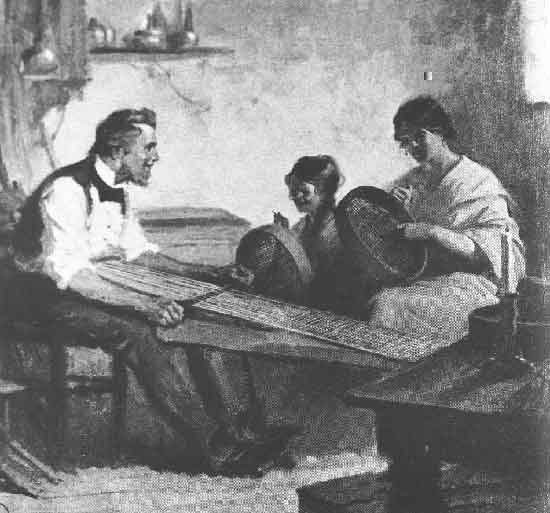
Benjamin Gilbert
with his wife and daughter around 1818. Gilbert was a leather
craftsman that perceived a market in horsehair sieves and
decided to go into business for himself manufacturing these
sieves that families of the time period used to strain liquids
as well as make their own flour with. This oil painting shows
him weaving the horsehair on a hand loom while his wife and
daughter "bind the sieves" with waxed thread.
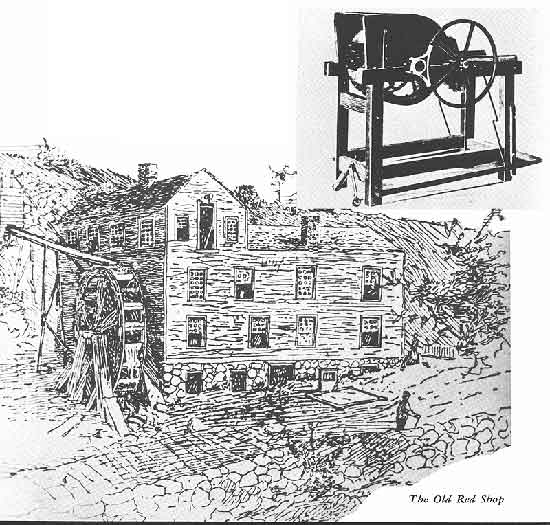
The market for horsehair
not being as large as he had imagined, Gilbert added the manufacture
of horse, cattle and hog hair filler for cushions, mattresses
and furniture. The move expanded the business and he was able
to rent space in an old saw mill that would later be purchased
in 1830 and become know as the Old Red Shop(Location: approximately
where Connery's store (now "Curves") is at the intersection
of Rt. 57 and Old Mill Road (formerly South Main Street.)
Above the building is a picture of the horse hair picker he
invented in 1826. The picker made working with tangled and
matted hair much easier.
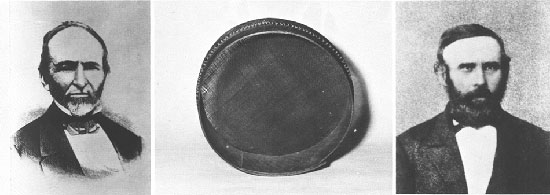
On the left is Sturges
Bennett, he joined Gilbert in 1828 to form Gilbert & Bennett.
He would go on to become President of the company from 1847
to 1876. In the middle is the horsehair sieve, on the right
is William J. Gilbert, Benjamin's eldest son. William joined
the company in 1832 to form Gilbert & Bennett & Company,
he was the salesman traveling great distances with large wagons
filled with goods. The sales were person to person(there was
no railroad or telegraphs in Georgetown at this time) and
on the return trip he'd stop at Tanneries and Slaughter houses
to collect the hair used in the manufacture of their products.
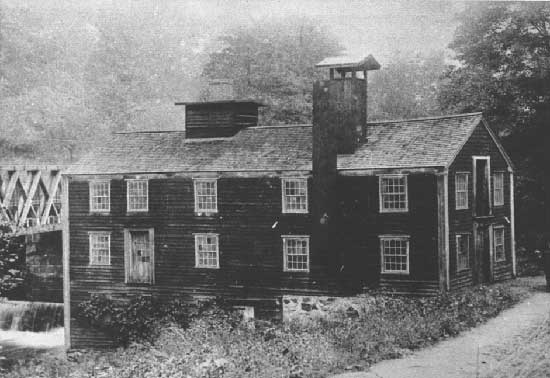
The expanding young
company quickly outgrew the Red Shop and in 1834 purchased
the mill site of Winslow and Booth on the Norwalk River. They
built a mill there that would become known as the Red Mill.
It is here they would experiment with wire and produce the
first woven wire cloth to replace the horsehair they had been
using since 1818.
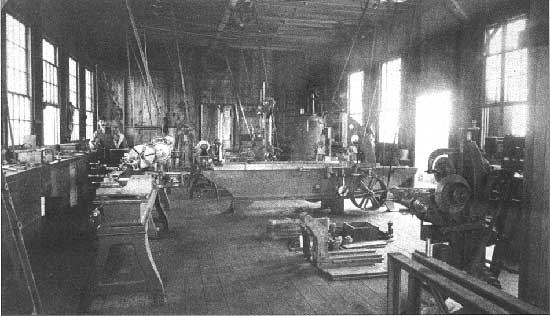
Interior view of
the Red Mill in 1888. The invention of the woven wire cloth
led to additional products which included: cheese and meat
safes to protect these food items from rodents, coal/ash sifters
to separate partially burned coal from the ashes, ox muzzles
to obviously muzzle oxen. If you look closely you can see
the leather straps that harnessed the waterwheel power.
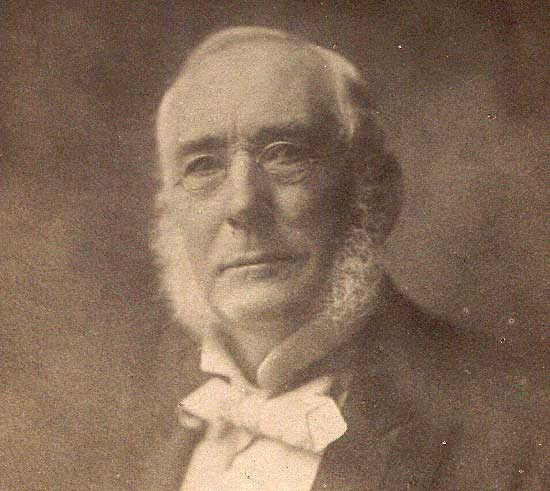
Edwin Gilbert was
admitted to the firm in 1844. Edwin joined his brother and
Edmond Hurlbutt as a salesman. Edwin had been working at the
company since he was 16 years old but was not officially admitted
until this time. He served as President from 1884 to 1906
and had he been credited for the time since he was 16 would
have served the company an amazing 78 years!
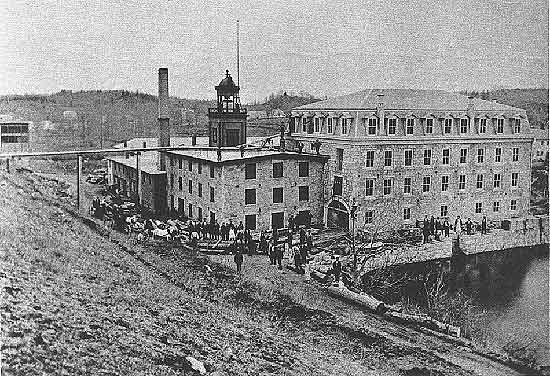
Rare view of the
upper factory building lost to fire in 1874. Benjamin Gilbert
passed away in 1847, a year later the company purchased the
mill site and millpond of Timothy Wakeman (location of the
current factory) and Great Pond 5.25 northwest of the factory
in Ridgefield. The Wakeman property would form the nucleus
of the upper factories and the purchase of Great Pond would
give them control of waterflow on the Norwalk River.
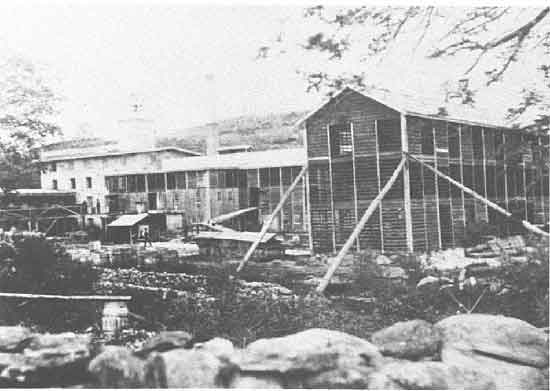
Glue Building- upper
factory. In 1850, the manufacture of glue was added to further
expand the company. The existing glue manufacturing process
was studied by the company and found to have several disadvantages.
They found that because glue was being dried on cotton netting
some of it adhered to the fabric, this was a waste and led
to higher costs. Another disadvantage was that the glue itself
would contain bits of cotton, which interfered with its adhesive
quality. They resolved these problems by manufacturing wire
netting upon which the glue would be dried. When the glue
dried, it could be separated from the wire netting with little
difficulty, and as a result revolutionized the glue-drying
process across America.
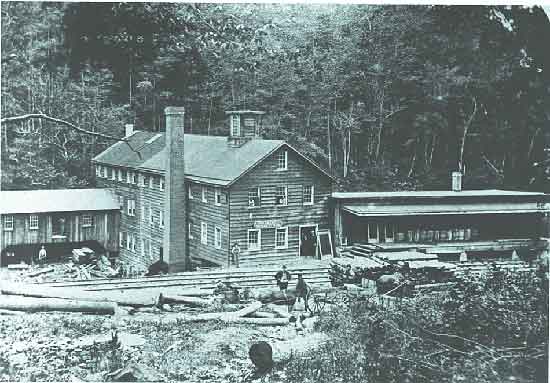
Lower factory wire
drawing mill. The lower factory wire drawing mill was built
in 1863. Prior to this G&B had been purchasing wire from
a company in Worchester, Mass. The new mill gave them the
ability to draw not only iron wire but brass, bronze, and
copper as well. The completion of the Danbury & Norwalk
Railroad in 1852 opened up transportation lines and the introduction
of the telegraph shortened the distance between buyer and
seller.
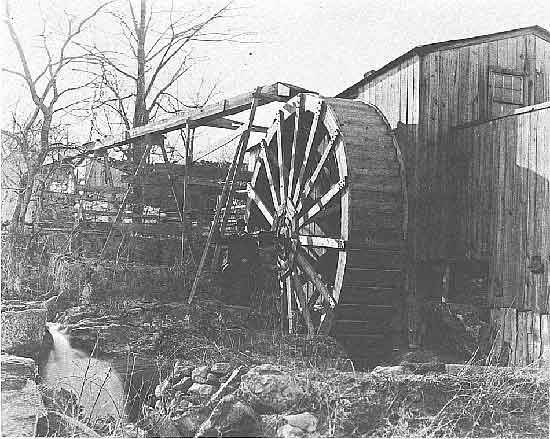
Waterwheel of the
lower factory. The Civil War cut off G&B's Southern markets
causing great concern as wire inventories were growing at
the factory. An inventive employee changed all that by giving
a section of wire cloth a coat of protective paint and offering
it for sale as a window screen. The result was so successful
that the company switched over its efforts to window screens-
cheesecloth had been being used up to this time so wire screens
were a big improvement.
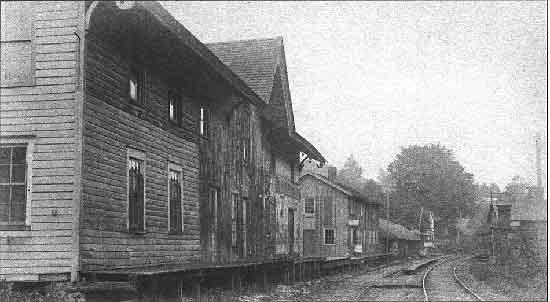
Lower Factories
view from the tracks looking toward Wilton. The first building
is the Sieve building, the second building is the Rail Station/Post
Office.
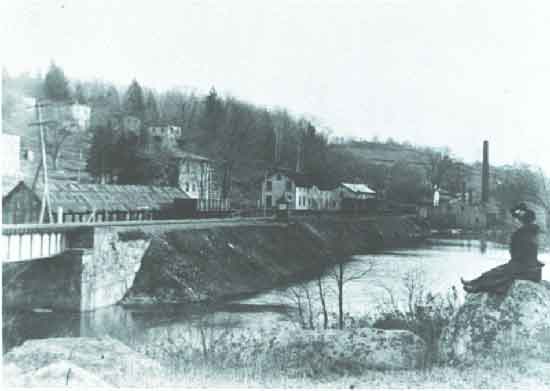
View of the Lower
Factory Pond looking back toward Old Mill Road. Up on the
top left is Bunker Hill, G&B tenement housing rented by
the Polish factory workers.

View of the rebuilt
upper factory buildings and William W. Beers, president from
1876-1879. A fire destroyed the upper plant on Sunday May
11, 1874. Just at the sun rising, the cry of "fire" startled
the village, and the latest, most complete and most valuable
of the factory buildings was found to be on fire. There was
no fire apparatus with which to fight the flames, and the
company's officials and the throngs of men, women and children
that quickly gathered could do nothing but look on while building
after building with its intricate and costly machinery was
reduced to ashes. In an hour and twenty minutes the buildings
were destroyed. Damage amounted to $200,000 for which the
mill had $40,000 of insurance.
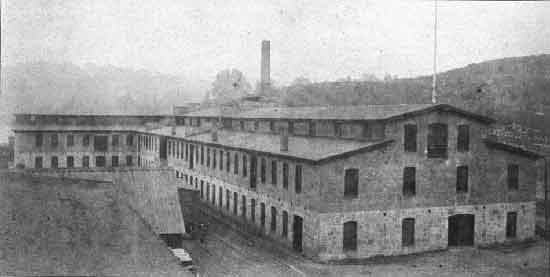
View of the new
building from the opposite side. Gilbert and Bennett was reorganized
as a joint stock company on May 30, 1874 and the machinery
that adorned the new buildings was the newest and best available.
The mill was opened and operating within the year. The officers
of the corporation were: Sturges Bennett, President; William
W. Beers Treasurer; David H. Miller, Secretary. The above
officers, with Edwin Gilbert and William J. Gilbert, comprised
the board of directors.
Continue
on the Gilbert & Bennett
History in Pictures Tour- 1874-1906
John
Moore Collection; Tryde
Photo's ; Redding
Times Photo's ; Tour
Present Day Georgetown ; Brent
Colley Collection
Back
to TOP | Back to Redding
Section | Back to Georgetown
Section
|

